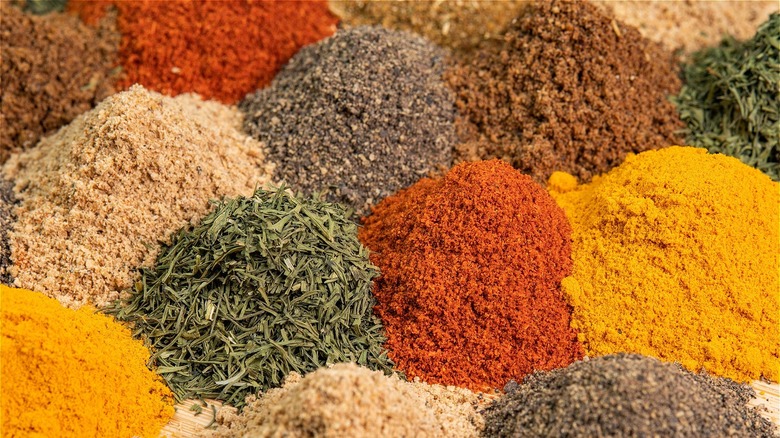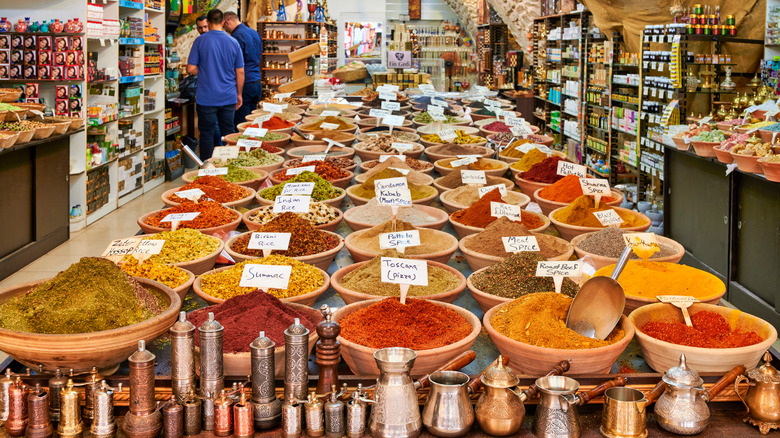For Cheaper Spices, Look In The Ethnic Foods Aisle Of Grocery Stores
When looking for dinner inspiration, it can be disheartening to see that a recipe calls for one or more spices you don't currently have because suddenly, you might wonder if you can even afford the ingredients. Walking down the spice aisle at the grocery store can reveal heart-stopping price tags. For instance, Kroger's online grocery site lists Frontier Herb's 2.08-ounce bottle of organic ground cardamom for $19.99. But, with just a little perusing, it also offers a 3.5-ounce bag of whole green cardamom pods for just $15.99 from Aiva, a brand that sells wholesale American, Asian, and Hispanic spices. This trend holds for many spices, not just cardamom.
Aside from the major discrepancy in price points, there's another key difference between these offerings: where they're placed in the store. Average American grocery stores have a spice aisle. These aisles are typically dominated by McCormick's red-topped spice jars, an even pricier organic alternative, and sometimes the store's private label. Brands like Aiva are rarely displayed alongside these bottles, so these shockingly high price tags can often seem to be the only choice. But, a quick walk to the ethnic foods aisle will show you spices at a significantly marked-down price. Soon, you'll be questioning why you ever bought spices anywhere else.
Why is the ethnic food aisle cheaper?
TikTok user @shawnfanning1 scanned the aisles for garlic powder at a Walmart, showing the difference between Walmart's Great Value version ($13.76 for 26 ounces) and Badia's garlic powder ($12.46 for 24 ounces) — located in the spice aisle — and the garlic powder found in the Hispanic aisle. The Hispanic aisle garlic powder was significantly less expensive at $6.48 for a 14-ounce container. Commenters pointed out that spices can be found for even cheaper prices at international and ethnic food markets.
@shawnfanning1 #garlic #dadsoftiktok #savemoney #groceryshopping #moneyhacks #walmart #thrifty #frugal #groceries #familydinner #food #foryou #fyp
There are a few reasons why ethnic food aisles typically offer more products for less cost when it comes to spices. One reason is that the retailers know spices are essential to ethnic cooking. Indian food relies heavily on coriander, cumin, and ginger. Mexican recipes often use coriander, cumin, Mexican oregano, cinnamon, cloves, and allspice. Because the use of spices in these cuisines is more common, retailers can easily offer more spice for less because they know their customer base will go through them quickly and come back for more.
Additionally, you'll notice that ethnic food aisles aren't characterized by meticulously displayed glass spice jars. Instead, these spices are usually sealed in disposable plastic bags. Spices might be subject to additional markup based on their packaging. The use of glass bottles and other materials can cause retailers to hike store prices to compensate for comparatively higher wholesale prices.

